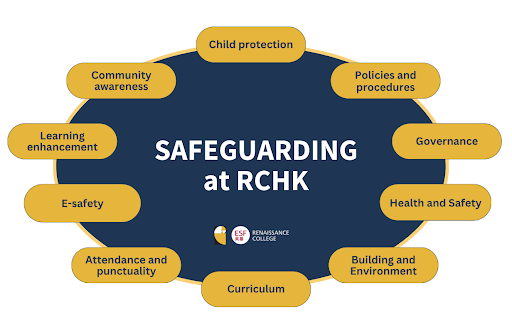Safeguarding
Safeguarding overview
Renaissance College is a nurturing educational environment committed to the safety and wellbeing of every child. We understand that as parents, one of your primary concerns is the safeguarding of your child while they are at school. We prioritise creating a secure and protective atmosphere where your child can flourish academically, socially, and emotionally.
At Renaissance College, we believe that every child has the right to learn and grow in a safe and supportive environment. In line with ESF guidance and best practices from around the world, we have implemented robust safeguarding measures to ensure the protection and welfare of all our students. Our staff are trained in safeguarding procedures and are committed to upholding the highest standards of child protection.
What is safeguarding and what is child protection?
The two terms safeguarding and child protection are frequently used interchangeably. However, there is a difference between them.
Safeguarding is all measures and means that schools employ to keep children safe and enhance their wellbeing. This includes health and safety measures, the security systems, learning and teaching to prepare students for the future, the safe recruitment of staff and anything else which has an impact on the safety and wellbeing of the students.
The diagram below sets out what Safeguarding includes at RCHK.

Child protection is one aspect of safeguarding. It is the term we use to describe what the actions taken to protect specific children who are unsafe in a way defined by the Child Protection and Safeguarding policy.
Who do I talk to about safeguarding?
Renaissance College has two Designated Safeguarding Leads, who are responsible for all safeguarding and child protection issues. The Designated Child Protection Leads are:
- Primary - Dr. Stephanie Howdle-Lang
- Secondary - Mr. Ryan Copley
We have five Child Protection Officers, who are available to manage and respond to specific cases.
Roles in Child Protection at RCHK
Child Protection Officers at RCHK
If you have a concern about the wellbeing of a child at Renaissance College, please speak to one of the Child Protection Officers, either by phone, by email or in person. It is important to do this quickly so that action can be taken.
If a safeguarding concern is raised, we follow a series of steps to ensure the safety of the students. These steps will include:
1. Documenting the concern through our reporting system.
2. Consulting with the student and their parents, as needed.
3. Discussing with necessary members of staff, which may include:
- gathering information from teachers
- discussing with counsellors if needed, particularly to provide support for the student
- deciding on the next steps with in-school social workers
4. Referring to external agencies as appropriate. This might include the Family and Child Protective Services Unit (FCPSU) of the Social Welfare Department (SWD) or government social workers.
How does RCHK address safeguarding?
Our comprehensive approach to safeguarding encompasses various aspects, including:
1. Staff Training and Awareness: We provide regular training to ensure that our staff are equipped with the knowledge and skills necessary to identify and respond to any safeguarding concerns. Our staff members are vigilant and are trained to recognize signs of abuse, neglect, or any other form of harm.
2. Safer Recruitment Practices: We follow stringent recruitment procedures to ensure that all staff members, including teachers, support staff, and volunteers, undergo thorough background checks and vetting processes. This helps us maintain a safe and secure environment for our students.
3. Open Communication: We prioritise the wellbeing of our students. Our school environment fosters open communication, where students feel comfortable expressing themselves and reporting any concerns they may have. We have designated safeguarding leads (DSLs) and Child Protection Officers (CPOs) to provide support and guidance to staff and students around safeguarding.
4. Collaborative Partnerships: We work closely with parents, guardians, and relevant external agencies to promote the safety and welfare of our students. We believe that safeguarding is a shared responsibility, and we encourage open dialogue and partnership with parents to create a strong support network for our students.
5. Robust Policies and Procedures: The ESF child protection and safeguarding policy is regularly reviewed and updated to align with the latest guidelines and legislation. We have clear procedures in place for reporting, recording, and managing safeguarding concerns, ensuring a swift and appropriate response to any issue that may arise.
Student education
We aim to contribute to students’ overall development and enable them to protect themselves and others. Our Relationships and Sexuality Education (RSE) curriculum is intended to support students to know what is appropriate and have ways to seek help if needed.
More information about the RSE curriculum is available through Primary and Secondary teachers, but some of our shared approaches include:
1. Age-Appropriate Education: Content and delivery of RSE education is based on the child's age and developmental stage. We use age-appropriate language, examples, and activities to ensure they can understand and engage with the concepts effectively.
2. Personal Boundaries: We teach students about personal boundaries and the importance of respecting their own boundaries and those of others. We help them understand that it is okay to say "no" when they feel uncomfortable or unsafe, and encourage them to communicate their feelings to a trusted adult.
3. Identifying Trusted Adults: We guide students in identifying trusted adults in their lives whom they can turn to if they have concerns or need help. students are encouraged to select adults both in the family and in school. We emphasise that these adults are there to support and protect them.
4. Recognizing and Understanding Feelings: We help students recognise and understand their own feelings and emotions. We support them to trust their instincts and recognise when something doesn't feel right. We also encourage open conversations about emotions and provide a safe space for them to express their feelings.
5. Personal Safety Rules: We actively teach students basic personal safety rules, such as not sharing personal information online, not accepting gifts or favours from strangers, and always seeking permission and informing a trusted adult before going somewhere or with someone.
6. Online Safety: We teach students about responsible internet use, including the importance of privacy settings, not sharing personal information online, and being cautious about interacting with strangers on the internet. We also encourage them to report any inappropriate or concerning online content or interactions to a trusted adult.
7. Body Safety: We educate students about their bodies, private parts, and appropriate and inappropriate touches. We teach them that their bodies are private, and no one should touch them without their consent. We help them understand the importance of speaking up if someone makes them feel uncomfortable or if they witness inappropriate behaviour.
8. Secrets and Surprises: We teach students the difference between surprises (like surprise birthday gifts) and unsafe secrets (secrets that make them feel uncomfortable or unsafe). We encourage them to share any unsafe secrets with a trusted adult.
9. Role-Playing and Scenarios: We spend time role-playing and discussing scenarios where they can practise recognising and responding to potential safeguarding concerns. This helps them develop their critical thinking skills and empowers them to make safe choices.
10. Open Communication: We foster an environment of open communication and trust. We encourage students to ask questions, express concerns, and share their experiences without fear of judgement. We regularly check in with students about their wellbeing and remind them that they can always approach a trusted adult for support.
Teaching students about safeguarding is an ongoing process and we continually reinforce these concepts through discussions, reminders, and age-appropriate resources to ensure that they are equipped with the knowledge and skills to stay safe in various situations.
We encourage parents to reinforce these approaches at home, and we welcome discussion to support us in creating a safe and happy learning environment.

